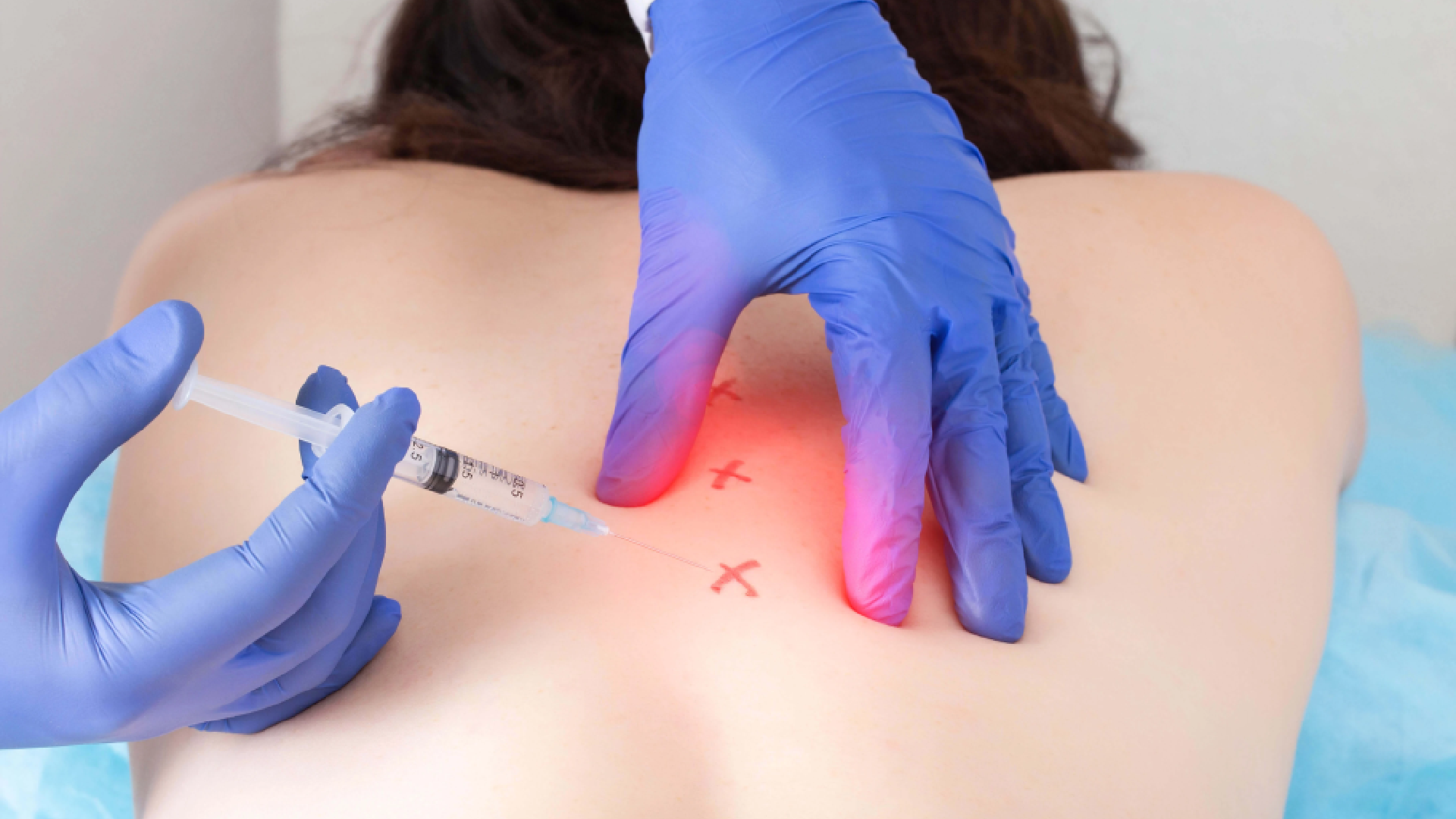
What is a Trigger Point Injection?
Trigger points, more commonly known as muscle knots, are areas of a muscle where the fibers have become tangled up, which cuts off the blood supply to that part of the muscle, and it becomes a painful spot. Sometimes they form due to scarring from surgery, however most often they are due to ergonomics and arthritis. While they can theoretically occur in any muscle, they usually form in specific muscles based on anatomical location of neighboring structures (for example, posterior neck muscles, upper back muscles around the shoulder blades, low back muscles).
How do you prepare for a Trigger Point Injection?
- Tell your doctor about your medical history and all medications you take, especially blood thinners.
- Usually, you don’t need to fast — you can eat and drink normally before the procedure.
- Wear comfortable, loose-fitting clothing so the injection site can be easily reached.
- Arrange your schedule — most people can return to daily activities the same day, but some prefer to take it easy for 24 hours.
Why is a Trigger Point Injection performed?
- To relieve muscle pain and tightness that does not improve with stretching, massage, or physical therapy
- To improve movement and flexibility.
- To treat pain from conditions such as fibromyalgia, myofascial pain syndrome, or tension headaches, piri.
- To reduce referred pain (pain that spreads to other areas).
What can you expect during a Trigger Point Injection?
- The procedure is usually done in a doctor’s office and takes 10–15 minutes.
- The doctor feels for the tight knot in the muscle and cleans the skin.
- A small needle is inserted into the trigger point, and medicine is injected.
- You may feel a brief sting or pressure. Sometimes, the muscle will “twitch” when the needle hits the knot — this is normal.
- Multiple trigger points can be treated in one visit if needed.
- You can usually go home right away.
What is the follow-up like for a Trigger Point Injection?
- You may feel relief right away from the numbing medicine but will likely come back when it wears off, until the true healing from the procedure kicks in a few days later
- Soreness at the injection site may last a day or two.
- Pain relief can last several weeks to months, depending on your condition.
- The doctor may recommend stretching, physical therapy, or massage after the injection to help keep muscles loose.
- In some cases, injections are repeated if pain returns.
What are the potential risks for a Trigger Point Injection?
Most side effects are mild and temporary, such as:
- Soreness or bruising at the injection site.
- Temporary numbness or tingling.
Rare risks include:
- Infection.
- Bleeding.
- Nerve injury (very uncommon).
Are there related tests to a Trigger Point Injection?
- Usually, no special tests are required.
- Your doctor may order imaging (like X-rays or MRI scans) if there is concern about another underlying cause of pain.
- A physical exam is usually enough to identify trigger points.
The content above does not provide any medical diagnosis or treatment recommendations. Any information or content on this website is not intended to be a substitute for consulting with a qualified healthcare professional. You should always consult with your healthcare provider before making any decisions related to your health or treatment.

Providing specialized neurological and pain management care with a patient-centered approach. Dr. Sader combines clinical expertise with compassionate care to help patients achieve optimal health outcomes.

